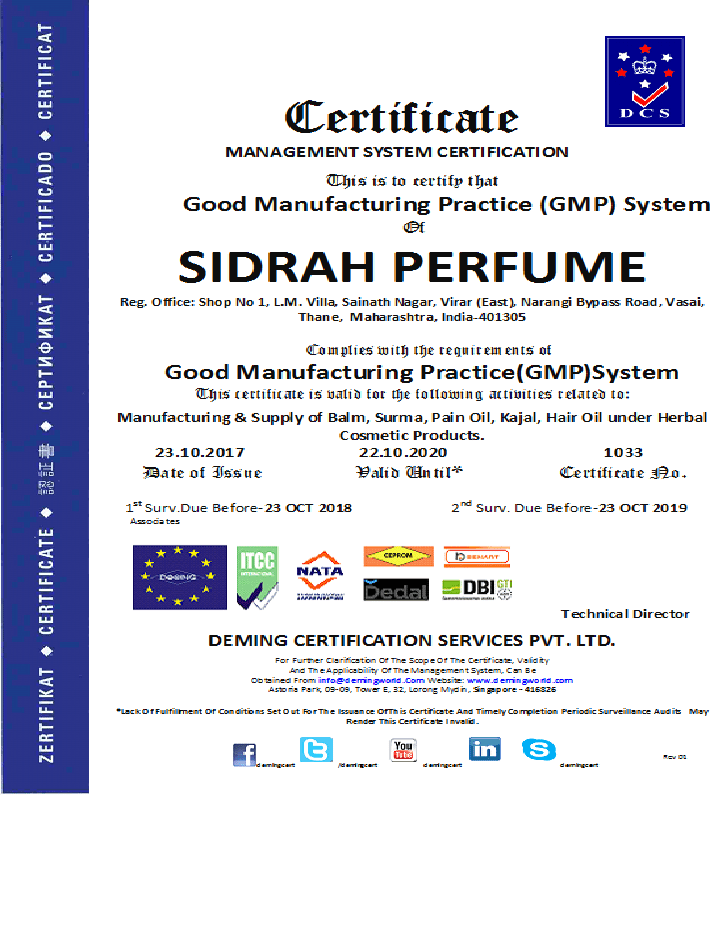1 day training on GMP Certification
₹10,000.00 Original price was: ₹10,000.00.₹5,000.00Current price is: ₹5,000.00.
A one-day training on Good Manufacturing Practice (GMP) certification can provide a foundational understanding of GMP principles and requirements. Here’s a suggested outline for such a training:
Title: Introduction to Good Manufacturing Practice (GMP) Certification
Duration: 1 Day
Objective:
- Provide participants with an overview of GMP principles and their importance in ensuring the quality and safety of pharmaceuticals, food, cosmetics, and other regulated products.
- Familiarize participants with the requirements for GMP certification and how to implement them effectively within their organizations.
Agenda:
- Introduction to GMP
- Definition and importance of GMP in regulated industries.
- Historical context and evolution of GMP standards.
- Regulatory bodies overseeing GMP compliance (e.g., FDA, EMA, WHO).
- Key Principles of GMP
- Personnel: Training, hygiene, and responsibilities.
- Premises: Facility design, maintenance, and cleanliness.
- Equipment: Calibration, maintenance, and validation.
- Materials: Raw material control, storage, and handling.
- Documentation: Record-keeping, SOPs, and batch records.
- Production: Process control, hygiene, and contamination prevention.
- Quality Control: Testing, validation, and release procedures.
- GMP Certification Process
- Overview of the certification process.
- Steps involved in obtaining GMP certification.
- Common challenges and how to address them.
- Case Studies and Examples
- Real-world examples of GMP implementation.
- Case studies highlighting the benefits of GMP certification.
- Lessons learned from successful GMP compliance efforts.
- Practical Exercises
- Group activities or exercises to reinforce understanding of GMP principles.
- Review of sample documentation (e.g., SOPs, batch records).
- Q&A session to address specific queries or concerns.
- Best Practices for GMP Compliance
- Tips for maintaining GMP compliance on an ongoing basis.
- Importance of continuous improvement and quality management systems.
- Resources and tools available for GMP implementation and compliance monitoring.
- Conclusion and Next Steps
- Summary of key takeaways from the training.
- Encouragement for participants to apply GMP principles within their organizations.
- Suggestions for further learning or resources on GMP certification.
Delivery Method:
- Instructor-led presentation with interactive elements such as discussions, Q&A sessions, and group activities.
- Use of visual aids, case studies, and real-world examples to enhance understanding.
Materials:
- Presentation slides or handouts covering key concepts and topics.
- Case studies, examples, and exercises for group activities.
- Reference materials and resources for further reading.
Evaluation:
- Participant feedback surveys to assess the effectiveness of the training.
- Evaluation of participants’ understanding through Q&A sessions and group activities.
By following this outline, participants can gain a solid understanding of GMP principles and the certification process within a one-day training session.
We also offer Certification Services for GMP. W. H. O. defines good manufacturing practices (GMP) as “that part of quality assurance which ensures products are consistently produced & controlled to quality standards appropriate to their intended use & as required by marketing authorization.”
GMP covers all aspects of manufacturing process that include:
Defined manufacturing process
Validated critical manufacturing steps
Suitable premises, storage, transport
Qualified & trained production and quality control personnel
Adequate laboratory facilities
Approved written procedures & instructions
Records to show all steps of defined procedures taken
Full traceability of products through batch processing records & distribution records
System for recall & investigation of complaints.
MORE Details >>GMP Certification


Reviews
There are no reviews yet.